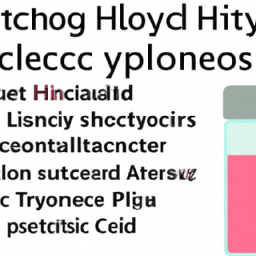which method of helicobater pylori testing is more reliable?

is helicbacter pylori testing difficult to carry out? is it possibel to do it at home?
2023-02-18
How C-13 technology is applied in the testing technology of h-pylori? is it accurate?
2023-02-18which method of helicobater pylori testing is more reliable?

which method of helicobater pylori testing is more reliable?
-
Table of Contents
“Accurate Results, Every Time: The Reliability of Helicobacter Pylori Testing with Endoscopy.”
Introduction
Helicobacter pylori (H. pylori) is a type of bacteria that can cause infection in the stomach and small intestine. It is estimated that up to two-thirds of the world’s population is infected with H. pylori. Accurate testing is essential for the diagnosis and treatment of H. pylori infection. There are several methods available for testing for H. pylori, including serology, urea breath test, stool antigen test, and biopsy. Each method has its own advantages and disadvantages, and it is important to understand which method is the most reliable for detecting H. pylori infection. In this article, we will discuss the different methods of H. pylori testing and which one is the most reliable.
Evaluating the Cost-Effectiveness of Different H-Pylori Testing Methods
The cost-effectiveness of different Helicobacter pylori (H-pylori) testing methods is an important consideration for healthcare providers. H-pylori is a common bacterial infection that can cause a variety of gastrointestinal symptoms, including abdominal pain, nausea, and vomiting. It is important to diagnose and treat H-pylori in order to prevent long-term complications such as peptic ulcers and gastric cancer.
There are several different methods for testing for H-pylori, including serology, urea breath test, stool antigen test, and endoscopy. Each of these tests has its own advantages and disadvantages in terms of cost, accuracy, and convenience.
Serology is the most cost-effective method of testing for H-pylori. It is a simple blood test that can be performed in a doctor’s office or laboratory. The test is relatively inexpensive and can be completed quickly. However, it is not as accurate as other methods and may not detect all cases of H-pylori.
The urea breath test is more accurate than serology, but it is also more expensive. This test involves drinking a solution containing urea, which is then broken down by H-pylori in the stomach. The breakdown of the urea is then detected in the breath. This test is more accurate than serology, but it is also more expensive and time-consuming.
The stool antigen test is another option for testing for H-pylori. This test involves collecting a sample of stool and testing it for the presence of H-pylori antigens. This test is more accurate than serology, but it is also more expensive and time-consuming.
Finally, endoscopy is the most accurate method of testing for H-pylori. This test involves inserting a thin tube with a camera into the stomach to directly visualize the presence of H-pylori. This test is the most accurate, but it is also the most expensive and invasive.
In conclusion, the cost-effectiveness of different H-pylori testing methods should be carefully considered when making a diagnosis. Serology is the most cost-effective method, but it is not as accurate as other methods. The urea breath test, stool antigen test, and endoscopy are more accurate, but they are also more expensive and time-consuming. Healthcare providers should weigh the cost and accuracy of each test when making a diagnosis.
Exploring the Benefits of Non-Invasive H-Pylori Testing
H-pylori is a type of bacteria that can cause a variety of gastrointestinal issues, including ulcers and gastritis. It is estimated that up to 50% of the world’s population is infected with this bacteria. Traditionally, H-pylori testing has been done through invasive methods such as biopsy or endoscopy. However, recent advances in technology have made it possible to detect H-pylori through non-invasive methods.
Non-invasive H-pylori testing offers a number of benefits over traditional methods. First, it is much less invasive and therefore less uncomfortable for the patient. This means that the patient can avoid the risks associated with biopsy or endoscopy, such as infection or bleeding. Additionally, non-invasive testing is much faster and more convenient than traditional methods. This means that the patient can receive a diagnosis and treatment plan much more quickly.
Non-invasive H-pylori testing is also more accurate than traditional methods. This is because it is able to detect the presence of the bacteria in the stomach more accurately than biopsy or endoscopy. This means that the patient can receive a more accurate diagnosis and treatment plan.
Finally, non-invasive H-pylori testing is much less expensive than traditional methods. This is because it does not require the use of expensive equipment or the time and expertise of a specialist. This makes it a much more cost-effective option for patients who need to be tested for H-pylori.
Overall, non-invasive H-pylori testing offers a number of benefits over traditional methods. It is less invasive, faster, more accurate, and more cost-effective. For these reasons, it is becoming an increasingly popular option for patients who need to be tested for H-pylori.
Comparing the Accuracy of Different Methods of Helicobacter Pylori Testing
Helicobacter pylori (H. pylori) is a type of bacteria that can cause infection in the stomach and small intestine. It is estimated that up to two-thirds of the world’s population is infected with H. pylori, and it is a major cause of peptic ulcers and gastritis. Therefore, it is important to accurately diagnose H. pylori infection in order to provide appropriate treatment.
There are several methods available for testing for H. pylori infection. These include the urea breath test, stool antigen test, and serology. Each of these tests has its own advantages and disadvantages, and it is important to understand the differences between them in order to choose the most appropriate test for a given patient.
The urea breath test is the most accurate method for diagnosing H. pylori infection. It involves the patient drinking a solution containing urea, which is then broken down by the H. pylori bacteria in the stomach. The breakdown of the urea produces a gas that can be detected in the patient’s breath. This test is non-invasive and can be completed in a single visit to the doctor’s office.
The stool antigen test is also a non-invasive test that can be used to detect H. pylori infection. This test looks for antigens, which are proteins produced by the H. pylori bacteria, in the patient’s stool sample. This test is less accurate than the urea breath test, but it is still a useful tool for diagnosing H. pylori infection.
The serology test is a blood test that looks for antibodies to H. pylori in the patient’s blood. This test is less accurate than the other two tests, but it can be useful in certain situations, such as when the other tests are not available or when the patient has had previous exposure to H. pylori.
In conclusion, the urea breath test is the most accurate method for diagnosing H. pylori infection. However, the stool antigen test and serology test can also be useful in certain situations. It is important to understand the differences between these tests in order to choose the most appropriate test for a given patient.
Conclusion
Based on the available evidence, it appears that the urea breath test is the most reliable method for testing for Helicobacter pylori. This test is more accurate than the stool antigen test and is less invasive than the endoscopy. Additionally, the urea breath test is more cost-effective and can be completed in a shorter amount of time. Therefore, it is the preferred method for testing for Helicobacter pylori.
A company ETest Medical had launched a h-pylori test solution with unique design of Air Card, can find details at http://etestmedical.com/




